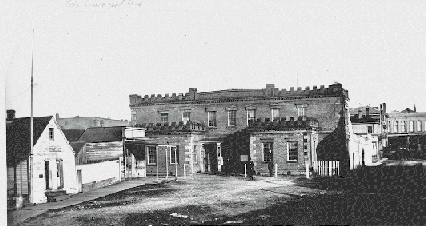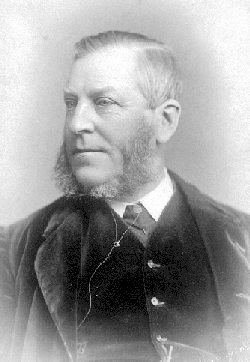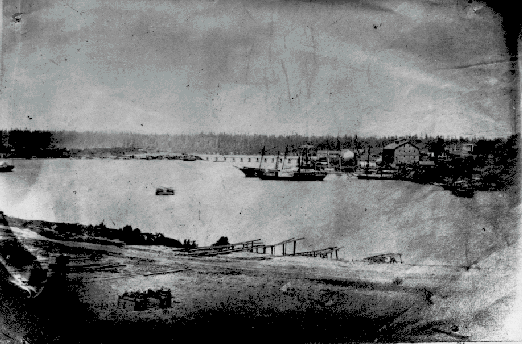| Race, Class, and Murder |
1868
Death in the British colony of Victoria was a common occurrence, the newspapers are full of reports of colonist dying of various illnesses or from accidents. However, in the early months of 1868, the small yet expanding colony experienced a rash of mysterious deaths, that had many Victorians concerned and baffled. During this period Victoria was a fast growing city, with an ever changing population, as miners and entrepreneurs traveled to the colony to cash in on the gold mines of Vancouver Island. In the span of a little over two months five dead bodies would surface, that had police and citizens scratching their heads.
The mystery begins, in February of 1868, on the fifth. When William Black, a Belfast native was jailed for his own safe keeping. The authorities thought it best to hold Black until a medical person certified Black as sane but for some reason they released him after a few days of confinement. In the newspaper reports from that time there was no mention of why they thought Black was insane. Soon after, he vanished and his friends feared for his life after hearing reports that Black was last seen on the James Bay Bridge, and that voices of a drunken man was heard, "A man's voice was heard distinctly twice imploring some other person not to throw him over the bridge." Worried, Black's friends had dragged the Inner Harbor with grappling irons. After days of searching the harbor, Black's friends expanded the search to include the various forests in Saanich, but to no result.
All during this time the authorities have taken little interest in finding William Black, the search had largely been conducted by his friends. Coverage of Black's disappearance in newspapers would be very limited, on February 18, 1868 a story about a dead horse on the side of the street received more coverage than Black. The disappearance of William Black would fall into obscurity, until March 30, close to two months after he first disappeared. In the shallow shore of Foul Bay a body was discovered, only half of the skeleton remained, the lower portion of the body was intact, but above the waist all that remained was the spinal column. Later, using the clothing on the body, Black's friends were able to identify the body as that of William Black. At the inquest, it was ruled that Black had drowned himself while he was insane. No further investigation was conducted.
The death of William Black would be forgotten in only a few days, as another body was discovered, this time in the waters off of Clover Point. The body recovered was at first reported to be headless but had a "Kaikiak" tattoo. At the inquest conducted by A.F. Pemberton, it was concluded from the tattoo that the man was a Kanaka (Hawaiian). And because the body was discovered close to that of William Black's, it was concluded that the Kanaka had to be one of the individuals on the James Bay Bridge with Black in February. The two men must have been thrown over together. Whether one of the men had murdered the other, would be ignored and never investigated.
The William Black case would be overshadowed by another mystery. Also beginning in February, this mystery would have a strange twist. A German miner named James Smith, seemed to vanished into thin air. A search of his Fisguard Street lodging revealed nothing about his whereabouts, but everything else he had owned remained in the room, as if he had just stepped out for a moment and would be returning soon. An inquiry was made at Smith's bank, where he had close to $2,000 deposited. Smith was known to be of sound mind and the idea of him committing suicide was not considered. Smith's friends' presumption was that someone had found out about Smith's wealth, attacked him for it somewhere near his room, supposing that he carried his wealth with him. As with William BLack's disappearance, the police showed very little in solving the case.
The discovery of a third body would force the Smith disappearance in to the back burner. The body of a young woman would be found in Cadboro Bay. Identified as 18 years old, Martha Ann Booth, who had vanished from her Esquimalt home. She was seen at varies area of Victoria. Passing by Benjamin Evans' home in Cadboro Bay, Evans remembers that strange nature of the young women as she walked by. A search conducted by family and friends found Booth's body in the clear waters of Cadboro Bay. It was believed that Booth had thrown herself into the rocks near the water. At Booth's inquest, her family testified that in recent time Martha's behavior had be very strange. Her death would be deemed a suicide. Some forty years later, D.W. Higgins would write a tale of the supernatural and tragedy, remembered as the legend of Cadboro Bay's long last Mystic Springs.
The discovery of dead bodies would not end with Martha Ann Booth, by coincidence two other bodies would be found on the same day as Martha. A second body was found in Metchosin, these remains were thought to have been there for at least three months. The identity of the person and reasons for this death would not be recorded nor investigated. As the discovery of a third body in Esquimalt got most of the attention form the authorities.
The body discovered in Esquimalt would be that of James Smith, the missing German miner. Upon inspection, it was clear that Smith had been murdered, his skull had been crushed by several blows by a blunt object of some kind. Smith had apparently not been robbed as he had a bank cheque for $1200 on his body. The only thing that seemed missing was his revolver, as his holster was empty. After an inquest it was concluded that Smith had been murdered by person or persons unknown, who had tricked Smith to Esquimalt hoping that he carried his wealth around. The mystery around the Smith murder, would be unsolved for more than a year. In December of 1869, a man named Henry Hewitt surrendered to police in Bastion Square, to answer accusation of having murdered Smith. It would appear that Mrs. G. Lange, owner of the Fisgard Street lodge where Smith had stayed, had been claiming that it was Hewitt who lured Smith to Esquimalt. Also a week after Smith disappeared, Hewitt told Mrs. Lange that Smith had told him, he could have whatever Smith left in his room. Mrs.Lange did not allow Hewitt to do this and locked the room up. Others witness came and increased suspicion on Hewitt, but after three days of questioning, Hewitt walked out of the court room and was a free man. The court found no evidence connecting Hewitt to Smith's murder. This would be the last time James Smith's murder would be investigated. Smith's murder would never be caught and the events surrounding his death are to this day a mystery.
The deaths presented here are very representative of the handling of deaths concerning citizens not of English background in Victoria during this time. As noted local authorities paid very little or no attention to solving thus deaths. The dead body found in Metchosin was not looked into by police and the identity of the person was never known. Concerning missing person, the searches conducted are often done by family or friends without the aid of police. In the newspaper updates of the event are very limited. The reason for the lack of attention could very well be due to the fact that the victims are mostly not of English background, an Irishman, a Kanaka indian, a German miner, and a insane young woman, and an unidentified man, all people viewed as the lower class of Victoria.
To view photos and read newspaper articles concerning the evens of 1868 go to the Sources page


